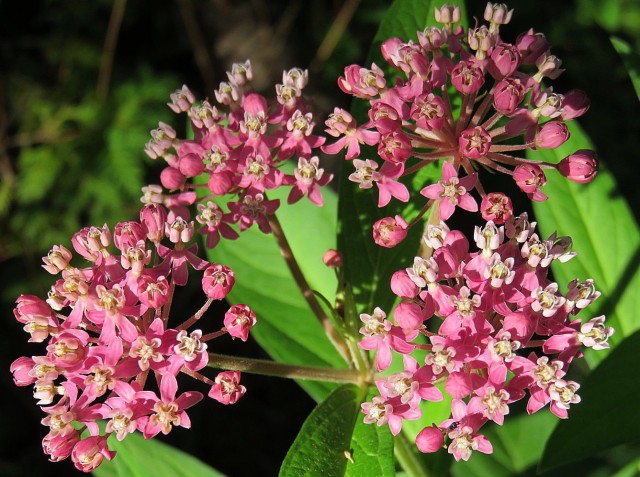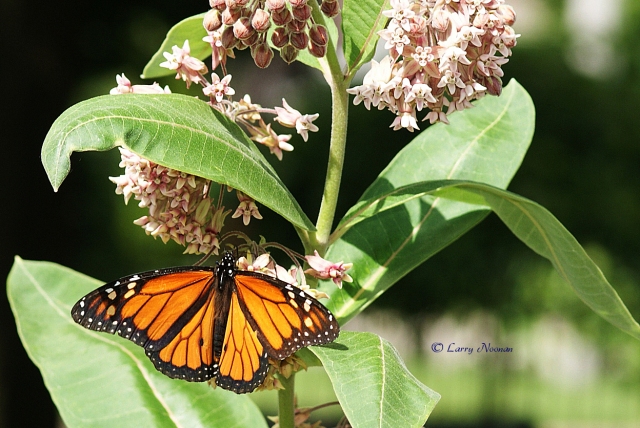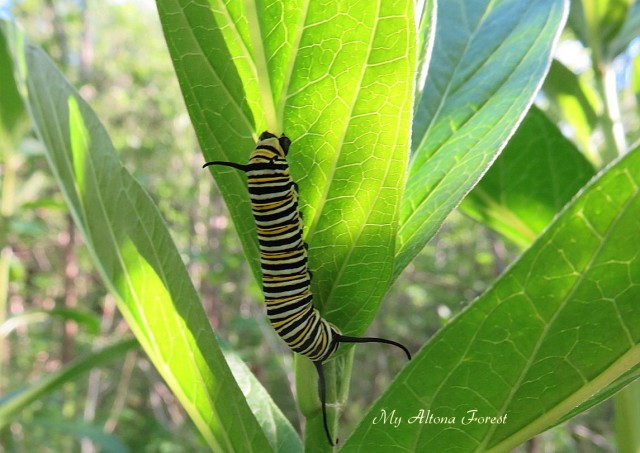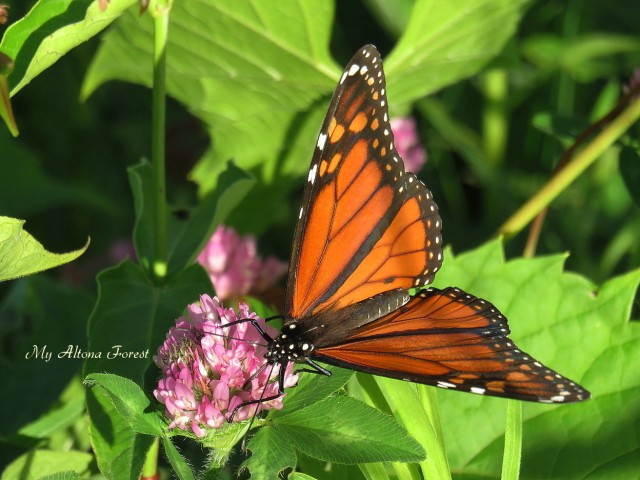One of the most astounding migrations on the planet begins right in our back yards, in our meadows and fields, and at the edges of forests like Altona. It is the amazing life story of the monarch – a delicate summer breeze- borne butterfly that has the endurance to travel the length of a continent.
Each year as our summer fades these fragile beauties begin their epic journey south. Past the Great Lakes, through the Appalachian forests, and past the Texas coasts all the way to a few acres of Oyamel fir cloud forest in Mexico. It’s hard to believe they travel this far, brave the elements, face storms, and harness some miraculous internal GPS system that leads them to the very forests that their ancestors wintered in. Changes to global weather patterns have decimated populations in their wintering grounds – like the deep freeze of a couple years ago. Still these few small areas of central Mexico are the only places they travel to.
When you see a monarch arrive in your garden, stop and realize that it has taken 2-3 generations to get here. The butterfly that traveled to Mexico’s mountains flew to the southern US in the spring and laid eggs before dying, and those new butterflies entered the fields and farms nearby. They slowly began to make their way across the US and stopped to have another generation. That second generation continued – trying to find sufficient food sources across vast swaths of hostile industrial farmland, avoiding herbicides and neurotoxic pesticides’ fatal effects (neonics), and finding milkweed plants to sustain their next generation. If all goes well, the second or third generation will make it to your back yard. Each time we see one, it’s a little miracle considering the natural and man-made obstacles it has overcome to arrive. Many starve if they cannot find sufficient wildflower nectar in farmlands to sustain them, and rainstorms, windstorms, and pesticides are often fatal to them.
There is a symbiotic relationship between the native milkweed plants and the monarch. The monarch butterflies enjoy the nectar from the flowers and help pollinate the plants. The successful pollination allows the milkweed to thrive and thus provide more nurseries for the crucial ‘fourth generation’ of monarchs. Unfortunately, there are no substitutes for where monarchs can lay their eggs.

Swamp milkweed in Altona Forest (damp growing conditions)

Monarch on common milkweed (dry growing conditions)
Milkweed is a broad-leafed native plant that is used by monarchs as their only nursery.(Asclepias syriaca – common milkweed – and other native milkweeds such as butterfly milkweed and swamp milkweed (above) are equally monarch-friendly.) Monarchs lay eggs on the undersides of the leaves and their larvae become striped caterpillars and feed on the leaves as they develop. Without the milkweed, the caterpillars would die – but Ontario put milkweed on the noxious weeds list which forced its eradication. The monarch caterpillars are not affected by the mildly toxic nature of this plant and become toxic themselves which makes them less attractive prey (creating their defense mechanism). Monarchs feed and breed in Ontario summers. Come colder weather, they make that astounding migration south. The south-traveling generation are by far the longest-lived of the 4 generations.
An invasive European milkweed vine (commonly called ‘dog-strangling vine‘) is taking over many meadows and grasslands. It’s without predators in North America and proliferating at an astounding rate. It mimics the native milkweed in many ways – but cannot sustain monarchs. It fools the monarch adults into laying eggs on it but the larvae starve since there is no nutritional value to its leaves. Nor does it provide nectar to the adults. Countless thousands butterflies die before they can ever become caterpillars or take flight.
Monarchs have been getting more attention in recent years because their numbers have dropped drastically and this past winter’s migration is the lowest on record. They have been added to Canada’s species at risk lists as a ‘species of special concern’ and ‘near-threatened’ – which understates the extent of the loss. Guelph University researcher Tyler Flockhart states that we have lost 90% of monarch butterflies in the past two decades. In Mexico there has been damage and logging of the only forests and trees where they overwinter, in the US there are huge tracts of industrial farms, pesticides and herbicides (and neonics use) where there is little wildflower food and ample danger, and in Ontario their milkweed nurseries are in dramatic decline with pesticide use, the eradication of native milkweed, and proliferation of dog-strangling vine.
Locally, we can only help the third and fourth generations – those who arrive in our yards to drink nectar and lay their eggs on milkweed, and their late-summer progeny who make the wondrous but arduous flight to Mexico. It will take a continental perspective and effort to save them because each annual cycle of monarchs use flight corridors though Mexico, USA, and Canada.

Monarch caterpillar on swamp milkweed in Altona Forest
We can all make a difference – planting native flowering shrubs or flowers (such as goldenrod, asters, joe pye weed, and all native types of coneflowers) as food sources, avoiding all pesticides, and most importantly planting native milkweed in every spare bit of space. Milkweed does incredibly well in sunny unwanted areas like roadsides, gullies, and vacant lots – making guerrilla gardening easy.
It’s a simple dream that our next generation will be able to see the amazing dance of their 4-generations.
(Please remember to like this blog or leave a comment!)

Altona Forest monarch
Resources: Begin your reading here
- Canadian Geographic – Monarch Butterfly
- Hinterland’s Who’s Who: Monarch Butterfly
- Monarch Biology
- Monarch Butterfly 2013 Migration Smallest On Record
- Monarchs Harmed by GMO Crops
- Monarch Migration (Point Pelee – Parks Canada)
- Environment Canada: Species at Risk (SARA Act) Monarch Butterfly
- OMFRA and the Noxious Weed List
- World Wildlife Federation – Monarchs
- CBC: Why the Monarch Migration May Be Endangered
- Canadian Geographic – Monarch Butterfly: Endangered Species
- Monarch Habitat Guide
- Monarch Watch
- Bring Back the Monarchs
Monarchs and Milkweed – The Precarious Cycle © 2014 Natasha G























Reblogged this on Friends of Glen Stewart Ravine.
Thanks 🙂
I planted one milkweed plant and just watered it to make sure it survived and sustained; 4 months, I noticed that it looked a bit beat-up; upon analyzing it, the leaves were mostly gone and I had 10 striped butterfly larvae munching away on it. It worked. I don’t think the milkweed is going to survive though.
Thanks for this awesome post!
True. Very true.
I have had milkweed in my yard by the lake and dont use pesticides. I have seen the adults but not the caterpillars. I am Michigan Zone 4.